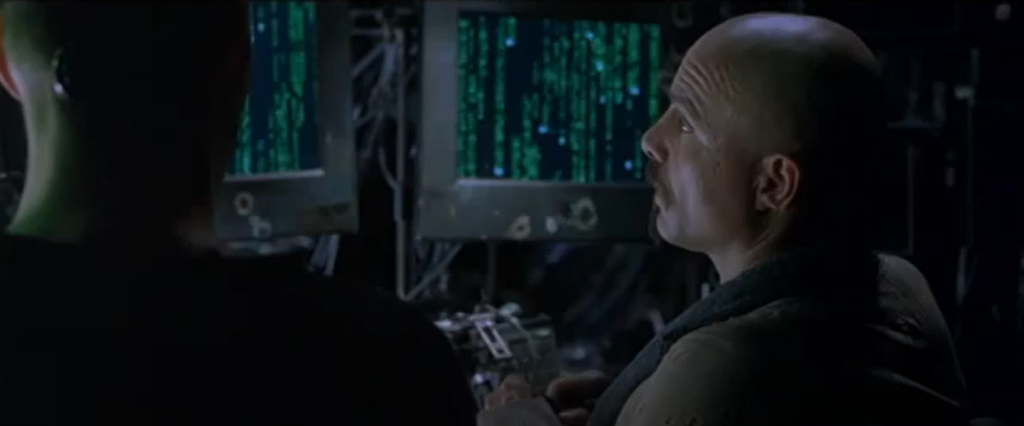The fastest icons in the Wild Wild Web
By Matt Visiwig  Aug 20, 2021
Aug 20, 2021
In this article, I’m going to show you the fastest way to integrate icons into your web projects. Hint, it’s literally click and paste.
But let me disappoint you first. You’re not going to find the fastest resources with a quick google search. In fact, when you look for icons to use on your website, a search will bring you to some well known sites and icon sets:
- The Noun Project
- FlatIcon
- Icons8
- Icon Finder
- Freepik
- FontAwesome
BUT, they come with barriers that we intend to avoid.
What do we want?
The SVG code!
When do we want it?
Instantly!
The 6 rules of the fastest icons
Not all icon collections are built the same. Some icon collections are large and some are small. Some are built as PNGs, SVGs, icon fonts, icon sprites, or left in a design file like Adobe Illustrator. But for your icons to travel at the speed of light, they have to adhere to a few rules. 6 very specific rules.
Let me spell out what we are looking for:
- SVG icons and not JPG/PNG, ZIPs, Fonts, or design files
- No software required to customize SVG (color with CSS)
- Files create extra steps
- No arbitrary barriers, like registration
- Barriers slow you down, but we have a need for speed
- Barriers slow you down, but we have a need for speed
- No cost or attribution required
- Paywalls are a barrier, attribution adds another step
- Paywalls are a barrier, attribution adds another step
- A search mechanism to quickly find relevant icons
- Looking at a grid of a thousand icons is slow
- Looking at a grid of a thousand icons is slow
- A sizeable icon set with consistent design
- If the icons don’t match in style, they’ll look bad together
- If the icons don’t match in style, they’ll look bad together
- A way to click and paste code
- Pasting code into HTML is fast and easy
Before I get to the list of good sites, I must stress I’m going to be strict. If you fail to meet one of those bullet points, you’re off the list.
For instance, Google Fonts has an impressive free icon tool. There is a huge collection of searchable SVG icons, no registration required, but it fails. It fails because there is no simple way to copy-and-paste the SVG code. You can download the icon as an SVG or add the icons as a font, but neither of these methods meet the criteria for being lightning quick.
I researched far and wide to curate this list of qualifying icon websites. I had to visit hundreds of websites, click around, test icons, read licenses, type in searches, and test the output. When you click a button: some sites copy the code, some open a modal, and some proceed to download a file. I unwittingly downloaded hundreds of icon files testing out websites to see what method they used by default. But I did this all for you.
Let’s get right to the list, then I’ll break down the steps to add an icon to your next project.
Lightning fast SVG Icon sites:
- Boxicons (1525)
- Tabler Icons (1298)
- Remix Icon (1135×2)
- Jam Icons (940)
- Phosphor Icons (894×3)
- Glyphs (860+)
- Teeny Icons (720+)
- System UIcons (420)
- Pixel Art Icons (350+)
- Radix Icons (400)
- Akar Icons (350)
- Material Line Icons (250)
- Hero Icons (230×2)
- Icons by Visiwig (200+)
- Mono Icons (177)
- IconPark (2400×4)
- Bootstrap Icons (1370)
- Iconmonstrr (4260+)
How to place your icons into your web project quickly
Now that you know WHERE to find good icons for your website or web-based app, it’s time to delve into the secret world of icon placement. The process is as easy as 1-2-3.
- Pick your icon
- Paste your icon
- Style your icon
Let’s look at each step.
Step 1: Pick and copy your icon
Up to this point, you have been preparing for this very moment. After visiting an icon site from the list above, you can search for the icon you need. In my case, I searched for a “crown” icon.
Then click to copy the icon SVG code.
The sites I provided are generally intuitive, but it may take a few seconds to locate the correct copy button on your first visit. Most sites have a copy mechanism that uses some variation of a “Copy SVG code” button, or clicking the icon directly, or even clicking a blob of SVG code.
Now that you have the SVG code in your clipboard, you’re ready to proceed.
Step 2: Paste your icon
This SVG code you are about to paste is powerful. Do you think I’m being silly or exaggerating? No, I’m serious. To the untrained eye, it looks like a blob of code. But you can paste this directly into software like Illustrator or Figma. That’s powerful, but for today you’re right: it’s just a blob of code.
Where to paste: We need to paste this into HTML. The great thing is that any tool you use to build your website likely outputs everything to HTML. Writing in PHP or JS? You’ll output to HTML. Are you using a page builder like Webflow or Elementor? You’ll output to HTML. Writing a blog post on WordPress, use an HTML element to—you guessed it—output to HTML!
Type CTRL+V or Command+V to paste the code in the desired place.
Bonus: to optimize the SVG code blob before you paste, I often use SVG OMG. It can shed 10-30% of the unnecessary code. You can also use it to inline the styles or deal with whitespace. We’ll talk about SVG optimization further another day.
Step 3: Style your icon
The code blob is SVG code. And if you stare at it long enough, it’s almost readable.

When you know what attributes you are looking for, it makes it easy to edit. Let’s spell out the two most important ones: color and size. Some of the icon sites have a color/size editor like Tabler Icons, Phosphor Icons, and the one I made (Visiwig.com) if you would rather not mess with the code.
Changing the color:
The two attributes that affect the icon color are fill and stroke. Generally speaking, if the icons are solid, you’ll want to change the fill color. If the icon is outlined, you’ll want to change the stroke color and set the fill to none (fill=”none”). You can use color names like “red” or input hex codes like #F00.
<!-- Red fill (fill="#F00") -->
<svg xmlns="http://www.w3.org/2000/svg" viewBox="-2 -4 24 24" width="40" height="40">
<path fill="#F00" d="M9.293 1.55l.707.708.707-.707a5 5 0 117.071 7.071l-7.07 7.071a1 1 0 01-1.415 0L2.222 8.622a5 5 0 117.07-7.071z"/>
</svg>
<!-- Purple outline (stroke="#808" fill="none") -->
<svg xmlns="http://www.w3.org/2000/svg" viewBox="-2 -4 24 24" width="40" height="40">
<path stroke="#808" fill="none" d="M9.293 1.55l.707.708.707-.707a5 5 0 117.071 7.071l-7.07 7.071a1 1 0 01-1.415 0L2.222 8.622a5 5 0 117.07-7.071z"/>
</svg>You could also control the color via CSS if you prefer, like so:
<!-- Change via CSS (class="icon") -->
<svg class="icon" xmlns="http://www.w3.org/2000/svg" viewBox="-2 -4 24 24" width="40" height="40">
<path d="M9.293 1.55l.707.708.707-.707a5 5 0 117.071 7.071l-7.07 7.071a1 1 0 01-1.415 0L2.222 8.622a5 5 0 117.07-7.071z"/>
</svg>
<style>
.icon{
fill: blue;
stroke: black;
}
</style>If you desire to change the background color, you’ll want target the SVG or icon container with a background color:
<!-- Change the background color inline -->
<svg class="icon" xmlns="http://www.w3.org/2000/svg" viewBox="-2 -4 24 24" width="40" height="40" style="background-color:yellow;">
<path d="M9.293 1.55l.707.708.707-.707a5 5 0 117.071 7.071l-7.07 7.071a1 1 0 01-1.415 0L2.222 8.622a5 5 0 117.07-7.071z"/>
</svg>
<!-- Change background color with CSS -->
<style>
.icon{
background-color: yellow;
}
</style>Editing the size:
There are a few factors that affect the icon size: width and height of the SVG or container, as well as the stroke-width for outlined icons.
On the above color demo’s the size was always 40px (the unit is implied). Let’s change that with both the inline method and via CSS and see what we get:
<!-- Change the background color inline -->
<svg xmlns="http://www.w3.org/2000/svg" viewBox="-2 -4 24 24" width="60" height="60">
<path d="M9.293 1.55l.707.708.707-.707a5 5 0 117.071 7.071l-7.07 7.071a1 1 0 01-1.415 0L2.222 8.622a5 5 0 117.07-7.071z"/>
</svg>
<!-- Change background color with CSS -->
<svg class="icon" xmlns="http://www.w3.org/2000/svg" viewBox="-2 -4 24 24" >
<path d="M9.293 1.55l.707.708.707-.707a5 5 0 117.071 7.071l-7.07 7.071a1 1 0 01-1.415 0L2.222 8.622a5 5 0 117.07-7.071z"/>
</svg>
<style>
.icon{
width: 100px;
height: 100px;
fill: red;
}
</style>Wrapping up the project
We went over the basics to quickly find a suitable icon and get it into our web project in a flash. After you go through the process a few times, you’ll discover how truly fast you can add a nice touch to your design. All it takes is a quick search, a click and paste, and a little customization to get it just right.
Lastly, while no attribution is required, it doesn’t hurt to show your love and support by sharing them on social media or crediting the authors somewhere.

Hey, I'm Matt , the creator behind SVG Backgrounds. I produce free and paid resources every month, sign up for alerts.